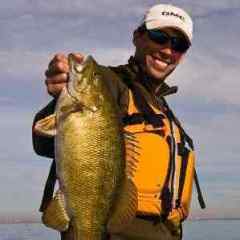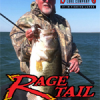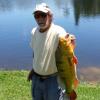I agree with some of the comments that were provided to your topic, and here's my two cents...
The versatility of jig fishing makes it an important tool in most any fishermans arsenal and for any size or type of predator fish desired, especially BASS. The variety of jig styles, shapes and sizes are produced for the many different uses and presentations that are effective. The only thing difficult to learn about jig fishing is the multitude of presentations and styles of fishing that are available with them. Any single style of jig fishing is relatively EASY to master, so don't let one particular style of fishing intimidate you or keep you from attempting to learn it!
Swimming a jig is effective at times and the style of trailers can be changed, such as short compact, long and narrow, or shapes according to the preferred prey species at any given time. You can basically retrieve them much like a spinnerbait with occassional twitches, drops and/or retrieve speed changes depending on the fish's request. Also at any desired depth.
Jigs can also be flipped/pitched, used to punch matted grass, casted and worked slowly through most any type of cover or fished vertically over certain types deeper structure if necessary.
You can use skirted jigs or naked jigs with any variety of trailers and soft plastics including Big worms and swimbaits, mounted on them depending on what you find the fish are wanting most.
To help answer some of your specific questions:
When is the proper time to use a jig?
There is never a bad time to have a jig tied on, except when you have found a more successful pattern on another bait style. Often when you've caught several fish in one area on other baits and the bite slows, a jig can pick up those fish that wouldn't eat your first choice.
How do I work the lure?
Depending on your chosen type of water or structure being fished, would determine your style of jig and presentation or best retrieve style.
For flipping /pitching, make accurate pitches to your target and keep the water entry or splash to a minimum especially in calm conditions. In windy conditions, it's not as important and the splash may even help with the bite. Allow the bait to fall on a slack line paying close attention to the line for a twitch or pause prior to it reaching the bottom. Any pause or twitch will often signal a bite from a suspended fish. Reel down to feel the fish and swing on it, keeping the rod back at full pressure until the fish exits the obstruction. If the jig reaches the bottom without a bite, lift the rod tip to feel the jig and pause for a second with a tight line. If there is no fish, short jump the jig once or twice allow to settle back to the bottom and repeat the process of feel etc. If no fish, retrieve the jig slowly back up through the limbs with light twitches and falls over each limb as it slides over. The speed of the fall is extremely important and the weight of your jig, size and type of line used, amount of wind present, size and bulk of the trailer, or the amount of drag represented by the trailer action are most of the determining factors for fall rate... Faster fall is often better for this presentation because the bite is normally a quick reaction strike. As usual, water clarity, amount of daylight and wind conditions will make color more important and require tweaking as needed.
Football jigs are excellent for fishing large and medium SMOOTH rock, small rock, shell, gravel, or hard bottoms. The benefit to Football jigs is their ability to keep the trailer in an upright position as it is moving across the bottom and the amount of noise or bottom disturbance that results when it is slowly walked or drug along the bottom. This noise is very beneficial for fish that aren't actually in or near the jigs path back to the boat. The noise and vibration produced will attract fish from several feet or even yards away and will cause them to come and investigate the commotion. This is especially important in low visibility conditions or deep water. It's VERY important to let the fish tell you their preference on presentation or retrieve style. MOST often, the fish want a SLOW short drag or hop then PAUSE presentation, to allow the fish to locate the jig and STRIKE. The pause is EXTREMELY important when dragging jigs slowly across the bottom, and has proven to be the ticket in 90% of my jig fishing experiences over the last 45 yrs. When I know that the fish are there, my pauses and speed of the jig movement will SLOW even more!
Have you Ever Fished for a Cat? I'm talking about a HOUSE CAT! Pull a small toy on a string and pause.... after several series of CAT attacks, you'll notice that often, the "It's ALIVE" movement or action gets the cats attention and the PAUSE makes him POUNCE. When the cat is hesitant to attack, small motion with longer pauses is better. Swinging or dragging the toy near the cat causes a reaction strike but if it's further away, they may move in quickly to close the distance and STALK it. I wish that I could always make a perfect presentation or cast in front of a Bass or drag it near their nose EVERYTIME, LOL.
Definitely, more fish are caught after the jig touches the bottom (unless flipping/pitching) and more often during the slow bottom bumping process that ensues. Of course you can catch bass that are suspended in open water with jigs making the fall rate and appearance even more important... locating these types of opportunities can sometimes be a big challenge. An easier solution, is once you find the depths that the bass and bait are holding or suspended at, you can then then find bottom structure at that same depth to fish which may make your fishing more successful.
For large or medium JAGGED rock and just about ANY casting situation, stand up head designs like Siebert Outdoors Brush jig or Moaner hooks Predator jig hold the trailer in a stand up position and snag much less than a football style which is preferable in many situations. They're great for Flipping as well, which makes them extremely versatile.
Are trailers required? and What advantages do they add?
IMO, YES and the more action the trailer can provide on the fall or slowest of retrieve speeds the better, regardless of water temps. Here are my thoughts on this:
Although it is not what many have preached in the past and possibly different than many still believe today, I have found from my many yrs of jig fishing along with fishing beside some of the best in the business, that regardless of water temps, the additional bait action on the fall or with minimum movement of the rod tip, makes a bass eat faster! I think that while fishing jigs, soft plastics or other slow style bottom bumpers in cold conditions when fish are more dormant, it is your speed of movement of the bait... or the speed that you cover any given piece of water that determines your bite success and not because of less action from your chosen bait. When you find fish in colder conditions, it's important to be closer to them with your presentation for a longer period of time, to allow them to become aware of your baits presence, and any additional action of your bait will only speed up this process. In fact many times, once a given group of fish are disturbed by one of them eating, often the rest of them wake up and become more eager to eat as well! It's about your bait or presentation disturbing their slumber enough to get them to strike, and high action baits along with a slower more diligent presentation will do exactly that... again IMO.
It's important to look at past thought processes, types of baits that were available to the market that had no action other than what was achieved through rod tip movement. Also look at the variety of popular cold water baits that are effective. Then dissect the process to determine why. A quick example is crankbait and Rattletrap style baits which are popular in cold water conditions, can be heard from extreme distances and disturb a bass' slumber from afar only to get smashed when it arrives in front of the fish... The fish is alerted previously from the noise and vibration that is coming ever closer and bringing a fish out of it's slumber, then they EAT when it arrives. How fast was the action on that bait?
A bit more information on the advantages of trailers: Jigs may represent any number of prey species or opportunities to a bass or other predator fish, so the style of trailer can be easily adjusted or changed to accommodate the need or look. You can choose matching colors or contrasting colors and switch from one to another easily, which is often needed to TWEAK the bite to Optimum results.
1) In CLEAR water and conditions, the use of clearer lines like flouro, or smaller dia.is important. Also the fish can see the bait better from further away. As they close in to investigate to see if it is REAL, more natural colors and some kind of trailer action during the even the slowest of rod tip or retrieve motion can gain the visual priority causing the fish to commit to the bite more easily.
2) In low light, stained or deep water conditions: The noise, vibration, action, size or profile of your total jig and trailer combination should be increased to make the bait felt, seen or heard easier. This also gives cause for a slower more diligent presentation to give the bass time to locate your bait.
FYI , Braid isn't great for sharp rocks or super clear water and conditions, but will work great otherwise and especially when flipping/pitching is necessary.
There are many more details that could be added that are important to understand about jig fishing, but hope this helps to answer your questions




